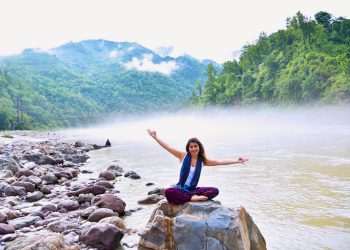Travel is one of life’s greatest privileges. Whether it’s a quick weekend getaway, a months-long adventure across continents, or a necessary business trip, setting off into the world brings excitement, opportunity, and sometimes — an overwhelming amount of stuff. Many travelers have experienced the regret of lugging a heavy, overstuffed suitcase through crowded terminals or struggling to fit a bulky backpack into a tiny hostel locker. Learning how to pack light isn’t just a practical skill; it’s an art form that can transform the travel experience from burdensome to liberating.
Packing light does not mean sacrificing comfort or going without essentials. It means making strategic choices, valuing versatility, and embracing a mindset that prioritizes experience over possessions. With a thoughtful approach, anyone can master the skill of traveling with less and discovering more.
Mindset Matters: The Philosophy Behind Packing Light
Before diving into strategies and packing lists, it’s important to shift perspective. Many people overpack because they fear being unprepared, equating more items with security. Others are caught up in “what if” scenarios that rarely materialize. The truth is, almost anything you might need can be bought or borrowed on the road.
Traveling light encourages adaptability. It builds confidence that you can handle unexpected situations without needing an arsenal of possessions. It frees you from the anxiety of lost luggage, excessive baggage fees, and the physical strain of hauling heavy gear. In short, it supports a freer, more spontaneous style of travel — exactly what exploration should feel like.
Start with the Right Bag
Choosing the right bag is crucial. The size of your bag will determine how much you can bring, so start small intentionally. A carry-on sized suitcase or a 30–40-liter backpack is ideal for trips up to several weeks. Limiting yourself to a smaller container forces you to prioritize and prevents overpacking by default.
Look for bags that are lightweight, durable, and have smart organizational features like compression straps and multiple compartments. Wheels are helpful in cities but cumbersome on rugged terrain; backpacks offer flexibility but require a good fit to avoid back pain. Match your bag to your travel style, and remember: the bag you carry should suit your trip, not the other way around.
The Rule of Versatility
Every item that goes into your bag should serve multiple purposes. When selecting clothing, prioritize neutral colors that mix and match easily. Choose pieces that can transition from day to night, casual to slightly formal, and adapt to different weather conditions.
A simple rule is the “3-2-1” approach: three tops, two bottoms, and one jacket or outer layer. Add a few lightweight accessories to change up your look, and you can easily create a week’s worth of outfits from a handful of items. Fabrics like merino wool, synthetic blends, and lightweight cotton are breathable, wrinkle-resistant, and quick-drying — perfect for travelers.
Shoes deserve special attention because they are heavy and bulky. Limit yourself to two pairs: one comfortable walking shoe and one more versatile or formal option depending on your trip. Always wear the bulkiest pair during transit to save space.
Smart Strategies for Packing Clothes
Rolling clothes instead of folding them not only saves space but reduces wrinkles. Compression packing cubes take organization to the next level, allowing you to separate outfits, undergarments, and accessories while squeezing out excess air. Not only does this maximize space, but it also makes living out of a suitcase or backpack far less chaotic.
When it comes to toiletries, minimize and decant. Travel-sized containers and solid toiletries (like bar shampoo, toothpaste tablets, and solid deodorant) save space and prevent spills. Many accommodations provide basics like soap and shampoo, so unless you have very specific needs, you can pack minimally here as well.
Finally, consider doing laundry during your trip. Packing a small packet of detergent and a sink stopper allows you to hand-wash clothes anywhere. Alternatively, laundromats and hotel services are widely available. Washing clothes halfway through a trip drastically cuts down the amount you need to bring.
Embrace Digital Tools
Technology has made light packing easier than ever. A single smartphone can replace a camera, map, guidebook, notebook, and more. Download necessary apps, maps, and entertainment ahead of time so you’re not burdened by extra gadgets and papers.
E-books or audiobooks replace heavy novels, while boarding passes and reservations can be stored electronically. Even travel documents can often be digitized, though it’s wise to carry a few printed copies of essentials just in case.
Be Honest About the “Just in Case” Items
One of the biggest culprits of overpacking is the temptation to bring “just in case” items. What if it rains torrentially every day? What if there’s a formal event? What if you need hiking boots?
Planning for every imaginable situation is not only impractical but impossible. Instead, pack for the most likely scenarios based on your destination, itinerary, and season. If something unexpected arises, trust your ability to adapt — locals manage just fine with the resources available where you’re going.
A lightweight rain jacket, for example, can handle most weather surprises without requiring you to pack multiple coats. A simple, packable scarf can double as a fashion accessory, a beach cover-up, or even an emergency blanket.
Create a Capsule Kit of Essentials
Instead of packing lots of extras, assemble a compact kit of absolute essentials that address multiple needs. For example:
A small first-aid kit (bandages, painkillers, antiseptic wipes)
A microfiber towel (quick-drying and ultra-compact)
A reusable water bottle
A universal travel adapter
A power bank for charging devices on the go
A sturdy, reusable tote bag (for groceries, beach days, or overflow items)
These versatile items take up little room but solve a wide range of challenges while traveling.
Practice Makes Perfect
Like any skill, packing light gets better with practice. Before your trip, lay everything out and question each item’s necessity. Once packed, carry your bag around the block to see how it feels. If it’s uncomfortable or unwieldy, reassess.
On the road, pay attention to what you use and what remains untouched. After each trip, review and refine your packing list. Over time, you’ll hone your ability to predict your needs accurately and pack intuitively.
The Freedom of Less
Traveling light isn’t just about saving space or avoiding fees — it’s about freedom. It’s about breezing through airports, hopping easily on and off buses, and feeling unencumbered while exploring winding alleys, bustling markets, or remote trails.
Packing light encourages mindfulness, forcing you to think about what you truly need rather than what you might want. It shifts the focus away from material things and back onto experiences — the real treasure of travel.
In a world often obsessed with accumulation, learning to travel with less is a radical, refreshing act. It teaches flexibility, resilience, and appreciation for simplicity. And once you’ve experienced the ease and joy of traveling light, it’s hard to ever go back.











